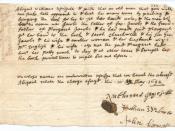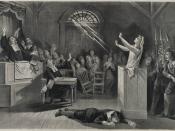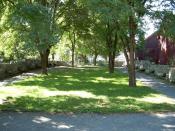The Crucible and the McCarthy Era Arthur Miller's The Crucible, depicts the Salem witchcraft trials of 1692 but is analogous to the McCarthy trials of the 1950s. In both situations, widespread hysteria occurs, stemming from existing fears of the people of that particular era. The Salem witchhunt trials parallel the McCarthy era in three major aspects: unfounded accusations, hostile interrogation of numerous innocent people and the ruination and death of various people's lives.
The unfounded accusations that Joseph McCarthy and the girls in The Crucible make are what fuels the widespread hysteria in both situations. McCarthy is quoted as declaring in a speech, "I have here in my hand a list of 205 that were known to the Secretary of State as being members of the Communist Party and who, nevertheless, are still working and shaping policy in the State Department." This is the first of the many unwarranted charges that he claims.
The girls in The Crucible, all make unwarranted charges against people for witchcraft, especially Abigail Williams. The leader of the accusations, she accuses various people from Elizabeth Proctor to Tituba. Joseph McCarthy and the girls earn the respect and awe of the people, instead of being riduculed for their unfounded accusations.
The hostile interrogation of numerous innocent people occurs during both time periods. During the McCarthy trials, the inquisitors attempt to use slippery tactics to implicate the accused and others. Often, shouting matches would occur on the floor of the Senate when the people are adamant about their innocence. Throughout the Salem witch trials, Judge Danforth and Hathorne would constantly badger the accused to confess. In Act III, Hathorne claims, "How do you know, then, that you are not a witch?" (Pg. 1221) After Martha Corey denies herself being a witch, Hathorne persists by saying, "Why...


